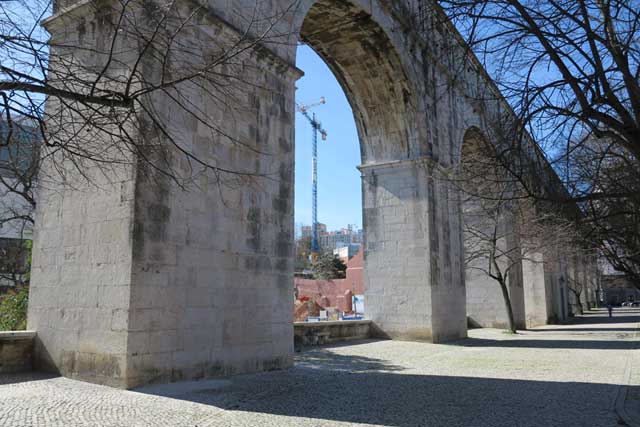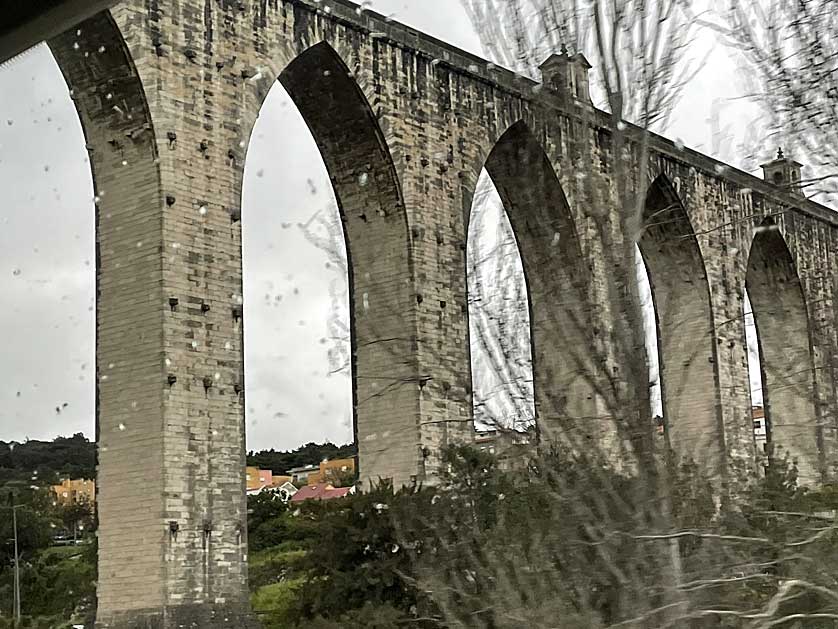Águas Livres Aqueduct, Campolide, Lisbon
The Águas Livres Aqueduct in Lisbon dates from the 18th century. It is one of the most impressive aqueducts in Portugal. Águas Livres was built to carry water to Lisbon from the Odivelas district and was 18 km long. The structure was part of a longer network of canals that stretched for over 50 km.
 |
| At Campolide the arches of the aqueduct are at their tallest rising to a height of 65 meters |
History
Construction began in 1731 during the reign of King João V under Italian architect Antonio Canevari. It finally brought water to the capital in 1748. After that work was continued by a number of Portuguese architects until 1799. Taxes on certain foodstuffs such as olive oil, wine and beef raised the necessary money to finance construction. Amazingly, the structure survived the 1755 Lisbon Earthquake, a testament to its architectural quality.
In places, the huge arches reach a height of 65 meters above the ground. The water fed various drinking fountains throughout Lisbon such as the Chafariz do Carmo and the Mãe d'Água reservoir.
 |
| Águas Livres Aqueduct, Lisbon |
Mãe d'Água das Amoreiras Reservoir
The Mãe d'Água das Amoreiras Reservoir is one of a number of structures maintained by the Museu d'Água and includes several fountains in Lisbon, the Águas Livres Aqueduct, best seen near Campolide Station, the Loreto Gallery, the Patriarcal Reservoir under the Principe Real Garden and the Barbadinhos Steam Pumping Station, not far from Santa Apolonia Station.
The aqueduct was still in use until the 1960s.
A macabre side note to the area around the aqueduct are the murders committed by the serial killer Diogo Alves (1810-1841). Alves became known as the "Aqueduct Murderer" as his victims were mainly killed close to the structure. Some of them were even thrown from its heights to make their deaths look like suicide.
Alves was eventually caught, tried and hanged. His severed head is preserved in a glass jar at the University of Lisbon's Faculty of Medicine.
 |
| The aqueduct and the area around it were the scene of around 70 murders in the 19th century |
Visit
The area around Campolide Station is a good place to see and photograph the aqueduct. There are also tours of the aqueduct organized from the Mãe d'Água museum. The structure itself is on Portugal's tentative list to become a UNESCO World Heritage site in the future.
 |
| The aqueduct as seen from the train |
 |
| Passing under the aqueduct on the train |
 |
| The Aqueduto das Águas Livres at Mãe d'Água reservoir |
 |
| The impressive stone arches of the Aqueduto das Águas Livres at Mãe d'Água reservoir |
 |
| The structure seen from a train window |
 |
| March 2024 |
© Portugal Visitor.com






No comments:
Post a Comment